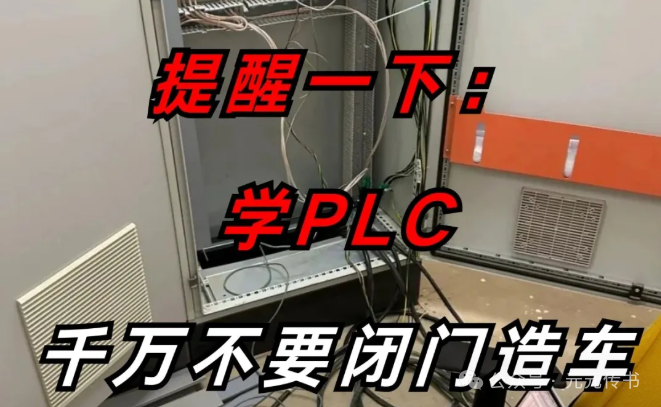
Introduction
**Hello everyone!** Today we are going to discuss a seemingly simple yet crucial aspect of automation control — the correct connection of PLC and limit switches.Don’t underestimate this small switch; it is the “eye” of automation equipment, directly affecting the reliability and safety of equipment operation.Red Alert: If connected improperly, it can lead to erroneous actions of the equipment, and in severe cases, may cause serious accidents!Blue Tip: But don’t worry, follow my guidance, and you will quickly master this key skill!
Working Principle of Limit Switches
Let’s first clarify what limit switches do.Imagine an elevator: When the elevator reaches the designated floor, it relies on limit switches to detect its position and stop.
In simple terms:
-
Mechanical part: When the moving part contacts the switch’s trigger lever, the internal contact state of the switch changes
-
Electrical part: The change in contact state is transmitted to the PLC input module via wires
-
Control part: The PLC executes the corresponding control logic based on the input signal state
Red Highlight: There are mainly two types of limit switches:
-
Normally Open (NO): Open when not triggered, closed when triggered
-
Normally Closed (NC): Closed when not triggered, open when triggered
Why is the Connection Method So Important?
You might think: “Isn’t it just connecting two wires?” But reality is often more complex:
-
Interference Issues: The factory environment has severe electromagnetic interference, and incorrect wiring can lead to signal misjudgment
-
Safety Considerations: Some safety-critical applications require “fail-safe” designs
-
Signal Stability: Poor contact in a vibrating environment can cause signal jitter
-
Diagnostic Capability: Good wiring facilitates fault troubleshooting
Blue Case: A packaging machinery factory once suffered a loss of 200,000 due to incorrect wiring of a limit switch, causing the robotic arm to start before reaching its position!
Detailed Explanation of Correct Connection Methods
1. Hardware Connection Steps
Step 1: Confirm PLC Input Type
-
Sourcing Input: Common terminal connected to 24V
-
Sinking Input: Common terminal connected to 0V
Step 2: Choose the Appropriate Wiring Method
Normally Open (NO) Switch:
PLC Input Point → Switch → Power Positive (Sourcing) or Negative (Sinking)
Normally Closed (NC) Switch:
PLC Input Point → Switch → Power Opposite Polarity
Red Warning: Be sure to confirm that the power voltage matches the specifications of the PLC input module!
2. Software Configuration Key Points
-
Input Filtering Settings: Adjust the filtering time based on mechanical vibration (usually 2-20ms)
-
Signal Processing Logic:
-
Use rising/falling edge triggering
-
Add debounce program
Diagnostic Function Implementation:
-
Signal timeout monitoring
-
State change counting
Blue Tip: Display the real-time status of the switch on the HMI for easier debugging!
Common Problem Solutions
Problem 1: Signal Jitter
Symptoms: PLC input indicator light flickers rapidly
Solution:
-
Check if the mechanical installation is loose
-
Add hardware filtering capacitor (0.1-1μF)
-
Add debounce timer on the software side
Problem 2: False Triggering
Symptoms: Change in switch state without contact
Solution:
-
Check if the wire insulation is good
-
Use shielded cables and single-ended grounding
-
Maintain sufficient distance from power lines
Problem 3: Short Lifespan
Symptoms: Switch frequently damaged
Solution:
-
Ensure load current does not exceed switch rating
-
Add arc suppression circuit for inductive loads
-
Consider switching to photoelectric switches
Advanced Application Techniques
Want to make your position detection more reliable? Try these advanced methods:
-
Dual-channel Redundant Design:
-
Use two switches in series/parallel
-
Enhance safety, suitable for critical positions
Smart Diagnostics:
IF Switch_Activated AND NOT Cylinder_In_Position THEN
Alarm := TRUE;
END_IF
Status Trend Analysis:
-
Record switch action times
-
Predict mechanical wear conditions
Red Innovation: A certain automotive welding line improved the accuracy of equipment failure warnings by 80% after adopting this solution!
Practical Application Case
Automation Warehouse System Renovation Project:
Problem:
-
Stacker frequently mispositions
-
Causing 3-5 downtimes per month
Solution:
-
Replace ordinary limit switches with high-precision heavy-duty types
-
Use dual NO contacts in parallel connection
-
Add software filtering (10ms)
-
Implement real-time status monitoring
Effect:
-
Positioning faults reduced to zero
-
Equipment availability increased from 92% to 99.5%
-
Annual maintenance cost savings of 150,000
Safety Precautions
Life First! These safety regulations must be followed:
-
Power Off Operations: Always cut off the power before wiring
-
Double Confirmation: Important switches are recommended to use NC contacts
-
Protective Measures:
-
Add protective covers to switches
-
Use safety relays in hazardous areas
Regular Testing:
-
Manually test switch functions every month
-
Record test results
Red Warning: There have been safety incidents due to maintenance personnel neglecting switch testing!
Interactive Q&A
-
What limit switch-related problems have you encountered?
-
What methods does your factory use to detect switch state reliability?
-
What maintenance tips do you have for limit switches used frequently?
Conclusion
Remember: Reliable limit switch connections are the cornerstone of automation equipment!Blue Encouragement: Don’t settle for “usable”; strive for “reliable” and “safe”.Red Emphasis: Spending an extra 5 minutes checking connections each time may prevent 5 hours of troubleshooting!
If you find this article helpful or have your own experiences to share, feel free to leave a comment and engage.Let’s work together to create more reliable automation systems!
ShareSaveViewLike